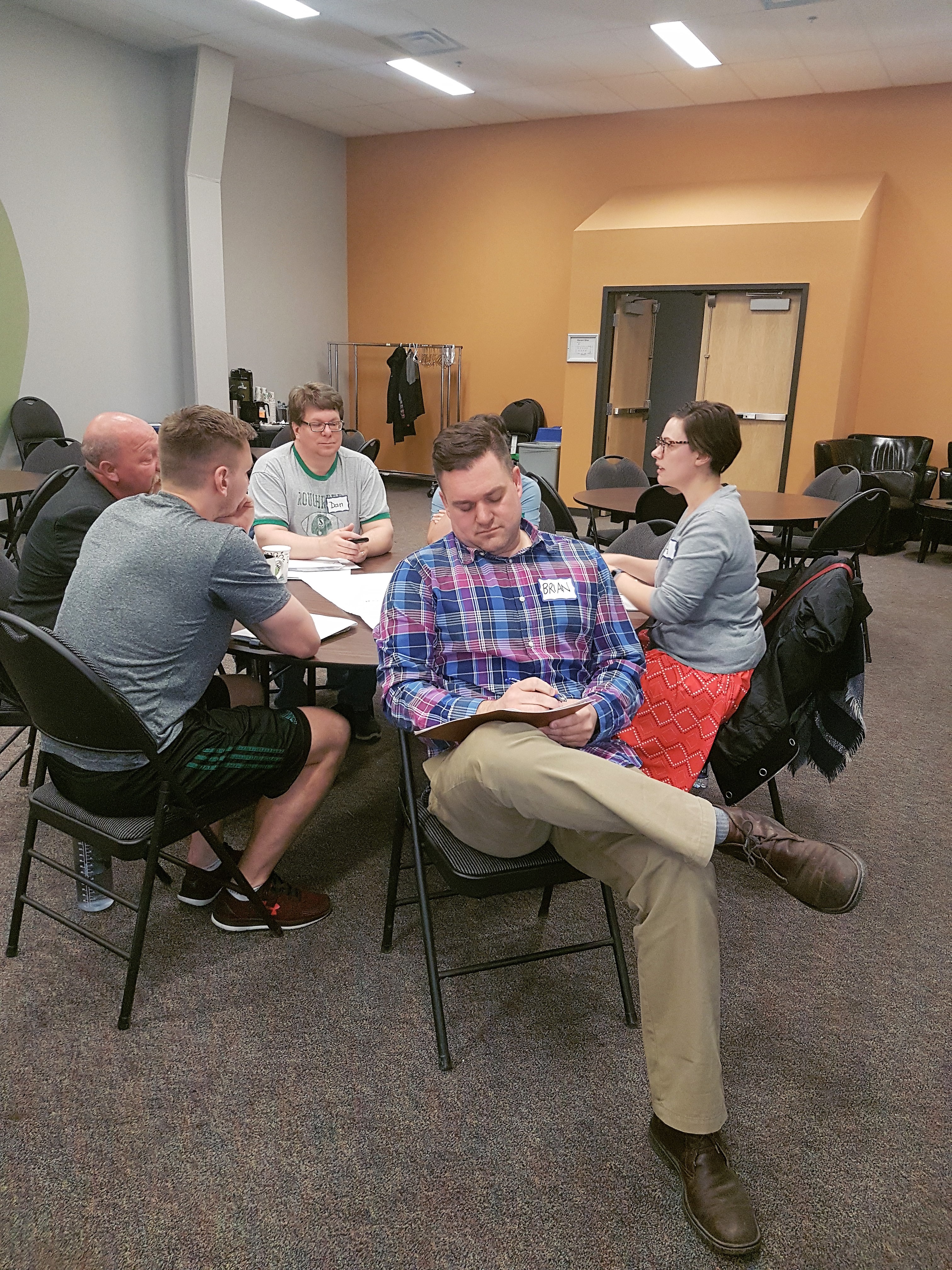Is eye contact always desirable when facilitating or gaining feedback? I experiment with intentionally turning my back to a group of participants to listen and learn. This approach can be extremely effective when used appropriately. Like all facilitation techniques, assess the group and the method and decide about its effectiveness and appropriateness.
Typically, I only use the “turning my back to the group” method with a group of under 15 participants to better hear each person. I will stand with my back to them as I write on a flipchart or move post-it notes to cluster ideas. I usually only do so for about 3 minutes. I find that, as I concentrate on the words, that the ideas repeated in different voices come to the forefront. Participants tell me that they tend to listen to each other more and not sub-consciously look at me as the focal point.
Sometimes, I invite a participant in a group to sit with his or her back to the rest of the group and listen to feedback. This works very well when one person is presenting a concept, idea or model. I encourage the individual to not speak and to listen to the discussion. The rest of the participants describe the topic, often talking about What works? And What could be improved? This method helps the individual to not defend her idea and helps the participants to potentially speak more freely when not making eye contact.
I only choose to turn my back to a group or ask participants to do so, after careful reflection about the benefits. I believe strongly in a facilitator watching and assessing non-verbal behaviour. Turn your back wisely!
My facilitation blog questions are: How have you, or might you, turn your back to the group? What other different techniques have you tried?
